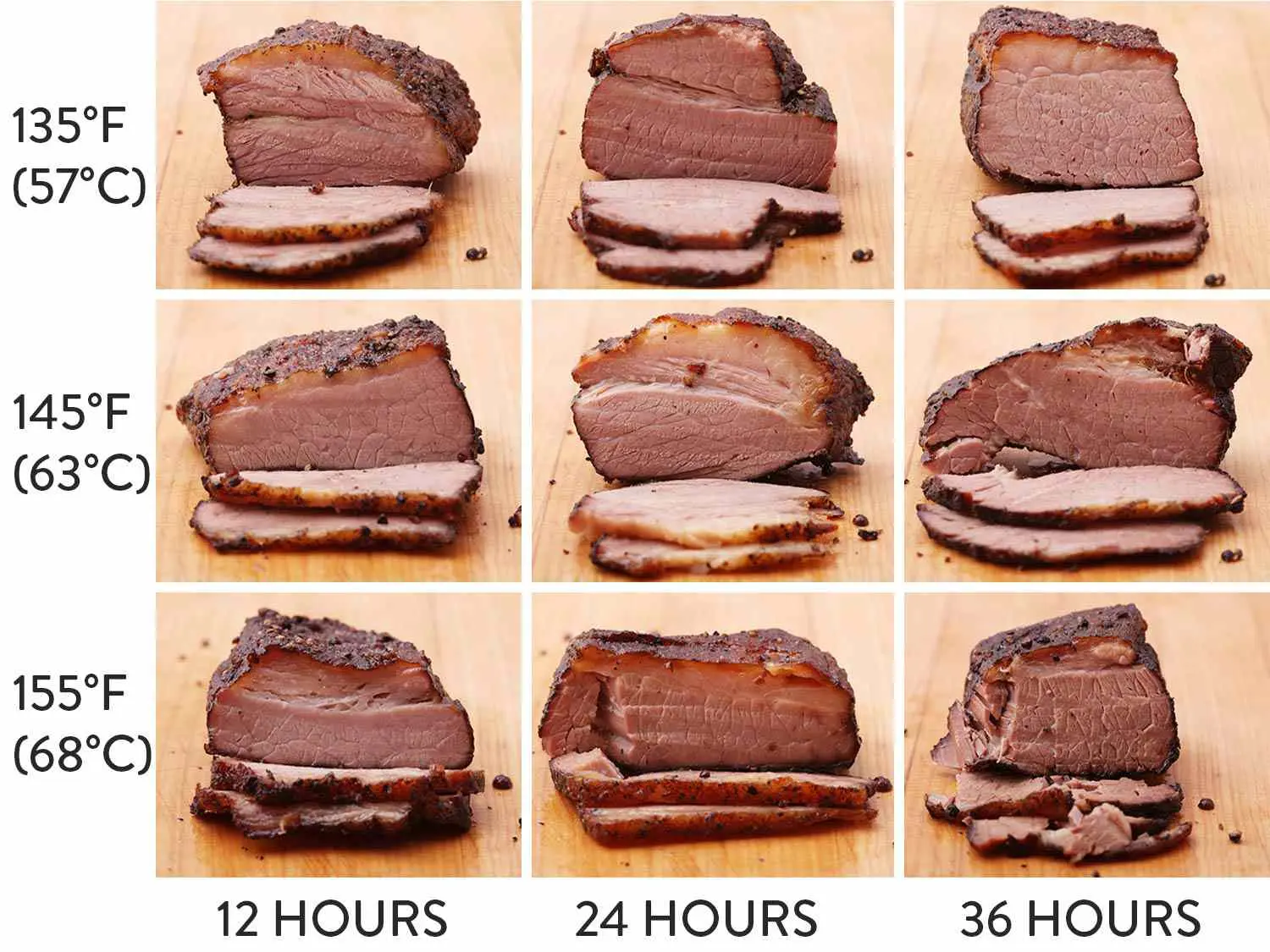Smoked brisket is a beloved dish among barbecue enthusiasts. The slow cooking process and infusion of smoky flavors create a tender and flavorful meat that is hard to resist. However, achieving the perfect final temperature for smoked brisket can be a challenge for many. In this article, we will explore the ideal temperature for cooking and resting brisket to ensure a mouthwatering result every time.
Why Temperature Matters
Temperature plays a crucial role in the cooking process of brisket. It determines the doneness and tenderness of the meat. If the temperature is too low, the brisket will be tough and chewy. On the other hand, if the temperature is too high, the meat can become dry and overcooked.
Additionally, temperature affects the breakdown of collagen in the meat. Collagen is a connective tissue that gives brisket its structure. When cooked at the right temperature, collagen breaks down into gelatin, resulting in a tender and juicy brisket.

The Ideal Cooking Temperature
The ideal cooking temperature for smoked brisket is around 225°F to 250°F (107°C to 121°C). This low and slow cooking method allows the meat to slowly cook and develop a smoky flavor while keeping it tender and juicy. It's important to maintain a consistent temperature throughout the cooking process to ensure even cooking.
Using a smoker or grill with a built-in thermometer is recommended to monitor the temperature accurately. However, if you don't have a built-in thermometer, you can use a meat probe thermometer to measure the internal temperature of the brisket.
The Stall
During the cooking process, you may encounter a phenomenon called the stall. The stall refers to a period where the internal temperature of the brisket plateaus or even decreases slightly. This can happen when the moisture on the surface of the brisket evaporates and cools the meat.
Don't panic if you experience the stall. It is a normal part of the cooking process, and the temperature will eventually start to rise again. The stall can last for several hours, so be patient and let the brisket continue cooking until it reaches the desired temperature.
The Final Temperature
The final temperature at which you should take the brisket off the smoker or grill will depend on the level of doneness you prefer. Here are some guidelines:
- Rare: 120°F to 125°F (49°C to 52°C)
- Medium-Rare: 130°F to 135°F (54°C to 57°C)
- Medium: 140°F to 145°F (60°C to 63°C)
- Medium-Well: 150°F to 155°F (66°C to 68°C)
- Well-Done: 160°F and above (71°C and above)
Keep in mind that brisket is a tough cut of meat and benefits from longer cooking times. Most barbecue enthusiasts prefer cooking brisket to medium-rare or medium to achieve the best texture and flavor. However, the final temperature is a matter of personal preference.
The Resting Period
Once the brisket reaches the desired final temperature, it is crucial to let it rest before slicing. Resting allows the juices to redistribute throughout the meat, resulting in a more flavorful and tender brisket.
Wrap the brisket in foil or butcher paper and let it rest for at least 30 minutes to an hour. This resting period also helps to retain moisture in the meat and prevent it from drying out.
Frequently Asked Questions
How long does it take to smoke a brisket?
The cooking time for a brisket can vary depending on its size and the cooking temperature. As a general rule of thumb, you can expect to smoke a brisket for around 1 to 5 hours per pound (0.45 to 0.68 kg) at 225°F to 250°F (107°C to 121°C). However, it is important to rely on the internal temperature rather than the cooking time to determine doneness.
Can I cook brisket at a higher temperature to save time?
While cooking brisket at a higher temperature may reduce the cooking time, it can also result in a less tender and flavorful end result. The low and slow cooking method is recommended for achieving the best texture and flavor in smoked brisket.
Can I use a gas grill instead of a smoker?
Yes, you can use a gas grill to smoke brisket. However, it may require some modifications to create a suitable smoking environment. Use indirect heat by turning off one or more burners and placing the brisket on the unlit side of the grill. You can also use a smoker box or aluminum foil pouch filled with wood chips to create smoky flavors.
Achieving the perfect final temperature for smoked brisket is essential for a tender and flavorful result. By cooking the brisket at a low and slow temperature, monitoring the internal temperature, and allowing it to rest, you can create a mouthwatering dish that will impress your family and friends. Experiment with different levels of doneness to find your preferred flavor and enjoy the deliciousness of smoked brisket!
If you want to know other articles similar to The ultimate guide to perfectly smoked brisket: achieving the ideal final temperature you can visit the Barbecue category.


Related Articles